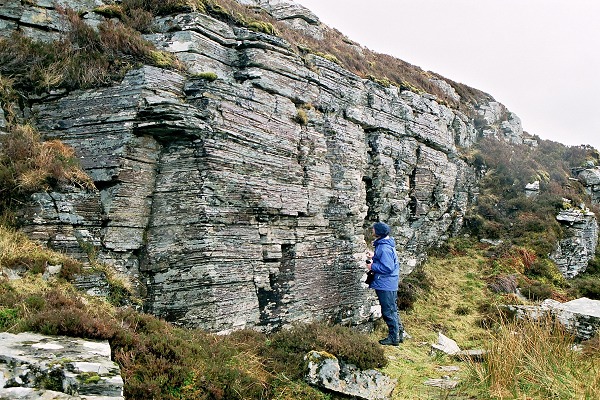
| Home | Geological History | Stratigraphy | Area map | Rock Index | About |
| Scourie | Achmelvich | Laxford | Clachtoll | Stoer | Assynt | Skiag Bridge | Glencoul | Knockan | Borralan | Ledmore |
Locality: Knockan Crag

![]() Moine
mylonite, Moine Thrust Zone, Knockan Crag
Moine
mylonite, Moine Thrust Zone, Knockan Crag
The rock has a very well developed platy texture, and
splits into thin flags
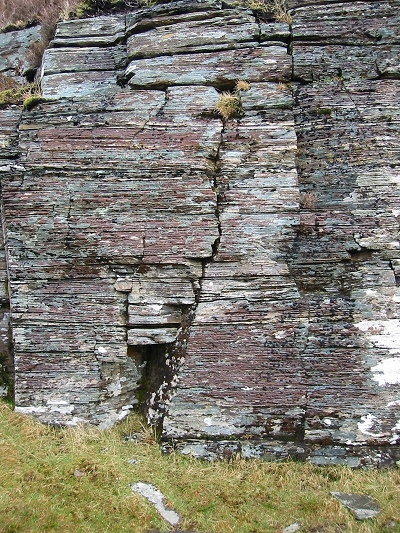
![]() Moine
mylonite, Moine Thrust Zone, Knockan Crag
Moine
mylonite, Moine Thrust Zone, Knockan Crag
Another view of the same rock face, showing the intense
fine banding in the mylonite.
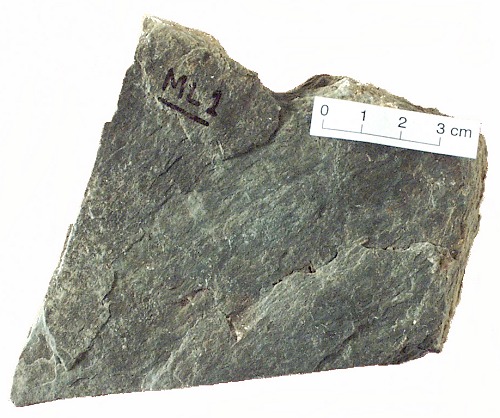
![]() Moine mylonite, Moine Thrust Zone, Knockan
Crag
Moine mylonite, Moine Thrust Zone, Knockan
Crag
This is a view of a cleavage surface of the mylonite. It
looks rather like a slate, and the surface has a striation
on it that shows the direction of movement of the thrust
sheet.
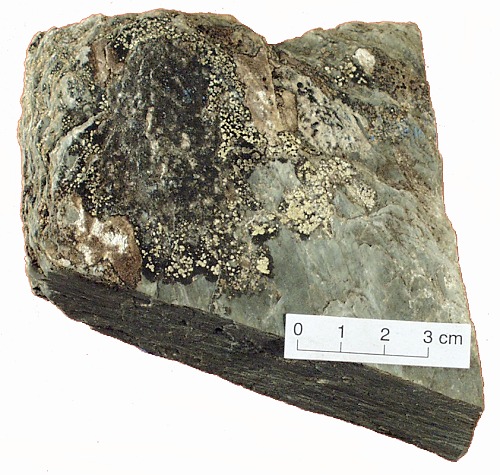
![]() Moine mylonite, Moine Thrust Zone, Knockan
Crag
Moine mylonite, Moine Thrust Zone, Knockan
Crag
This oblique view shows, particularly on the left-hand
weathered edge of the sample, its tendency to split into
sheets
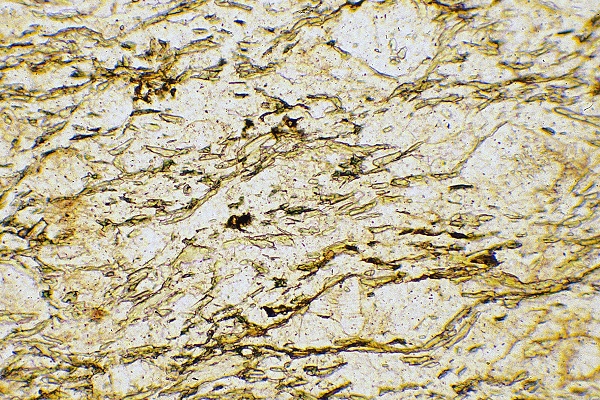
![]() Moine mylonite, Moine Thrust Zone, Knockan
Crag
Moine mylonite, Moine Thrust Zone, Knockan
Crag
The cleavage of the mylonite is due to the aligned flakes
of mica (here they have a yellowish colour). At the
microscopic scale the banding is not perfectly flat, as it
wraps around more resistant crystals.
Plane polarized light. Field of view 2.5 mm across.
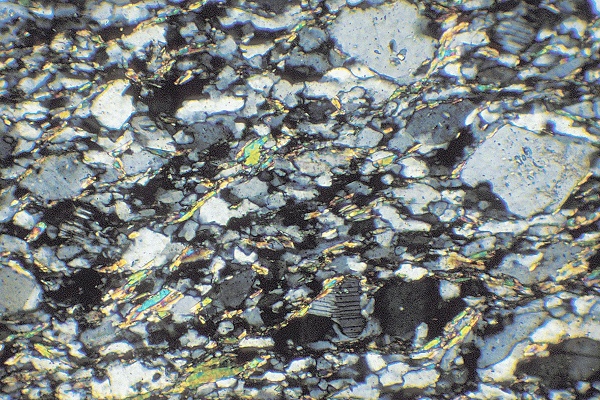
![]() Moine mylonite, Moine Thrust Zone, Knockan
Crag
Moine mylonite, Moine Thrust Zone, Knockan
Crag
Between crossed polars the crystals can be seen more
clearly. When the shearing occurred, the rock was quite hot
(probably about 300 degrees Celsius). The quartz was able
to change shape and form new smaller crystals, allowing the
rock to flow and become a mylonite. The larger crystals are
feldspar, which does not recrystallize as easily as quartz
when sheared. The bright coloured flakes are mica.
Crossed polars. Field of view 2.5 mm across.
| Scourie | Achmelvich | Laxford | Clachtoll | Stoer | Assynt | Skiag Bridge | Glencoul | Knockan | Borralan | Ledmore |
| Home | Geological History | Stratigraphy | Area map | Rock Index | About |
D.J. Waters, Department of Earth Sciences, May 2003